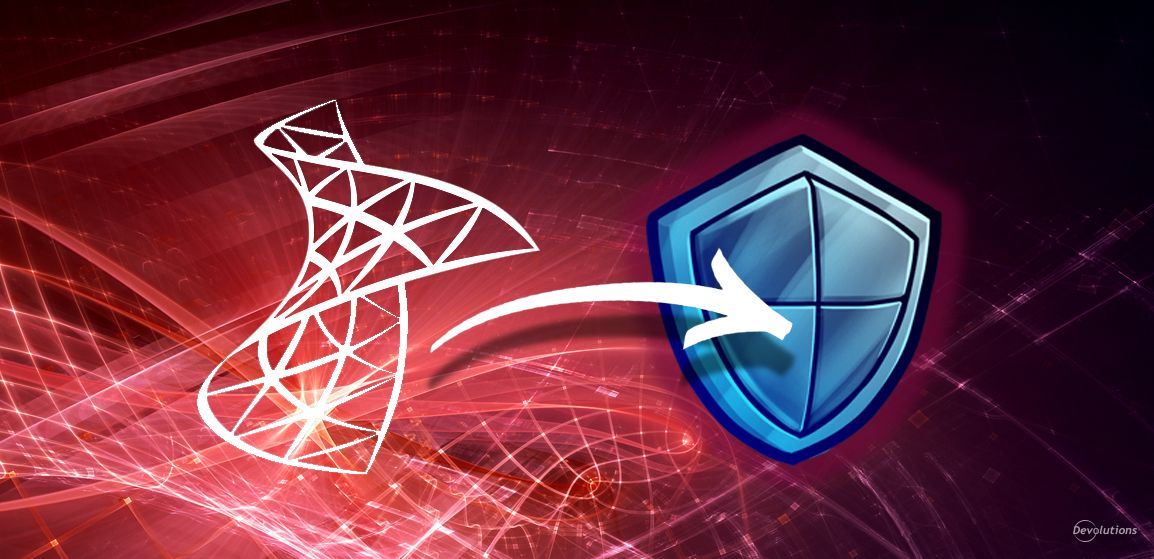- Steer Smarter by Deploying Friction Intelligently
- Stifle Weaknesses by Anticipating the Biggest Mistakes Ahead
- Stifle Fearfulness and Scare Yourself into Growth
- Style Your Flow and Adopt Fluid Thinking in Talent Management
- Style Your Leadership by Seeking a Mentor from a Board of Directors
- Stretch Ambitions and Challenge Talent Like an Elite Sports Coach
- Study the Future and Experience New Technologies
- Some Final Advice
The year was 2000. Y2K failed to trigger the end the world (heck, it didn’t even cancel The Simpsons). Sydney, Australia hosted the Summer Olympics. Whether you wanted it or not, it was seemingly impossible to go anywhere without hearing a Destiny’s Child song.
And something else interesting happened at the dawn of the new millennium: the smart folks at Harvard Business Review asked a provocative if not by some accounts inflammatory question: Are CIOs obsolete?
Well, fast forward about 23 years, and we can answer that ill-fated inquiry with a resounding, definitive: NO!
Indeed, not only are CIOs as a species alive and well, but they are more important than ever. As enterprise management cloud vendor Workday declares: “From collaborating with the CFO to plan, execute, and analyze operational change at pace and scale to empowering the CHRO to deliver hybrid and inclusive digital experiences, the CIO is a vital driver of organizational agility and sustainable digital transformation. All the while, they need to ensure a sound data foundation is in place across the whole business.”
Understandably, navigating the intersection of tech, people, and business strategy is difficult at the best of times, and daunting at the worst (CIOs have the highest turnover in the C-Suite). To help make their year triumphant instead of turbulent, Gartner advises CIOs to focus on seven key priorities in 2023:
Steer Smarter by Deploying Friction Intelligently
Gartner says that CIOs should leverage psychological and emotional friction — through self-discipline and (the good kind of) external peer pressure — to dial back unwanted negative behaviors, and establish positive new ones. The gameplan here has three core plays:
- List out all outgoing unwanted behaviors, and incoming aspirational behaviors. Add ideas for creating friction for the former, and removing friction for the latter.
- Make commitments public. Compete with colleagues on adherence to a new behavior(s).
- “Habit stack” a desirable new behavior onto one that already exists.
“Friction gets a bad rap,” commented Gabriela Vogel, Senior Director Analyst at Gartner. “It’s considered, rightly, a barrier to adopting new technology and behaviors, because it makes things harder than they need to be. But making some things harder than they need to be can be a good thing.”
Stifle Weaknesses by Anticipating the Biggest Mistakes Ahead
In The Art of War, Sun Tzu advised: “Every battle is won before it's ever fought.” Well, it looks like Gartner analysts have been brushing up on the military classics, because the second priority for CIOs is to stifle weaknesses, not by denying or suppressing them, but by going in the other direction and anticipating and neutralizing them before they have a chance to derail plans and undermine objectives.
To that joyful end, Gartner suggests that CIOs take some quality time to:
- List all projects, objectives, people, and interactions that are deemed “high risk” for the year — from ambitious “moonshots” to less-than-healthy (or maybe just plain dysfunctional) stakeholder relationships, and so on.
- Imagine the worst-case scenario for each item on the list. Granted, this will be nerve-wracking. But do it anyway!
- Recognize that the two biggest root causes of failure are groupthink and in-group bias. Analyze the scenarios to see if either of these are likely to contribute to failures and fiascos.
- Create an action plan that addresses preventable mistakes, and assign them to the appropriate individual or group. Make preventing mistakes a goal for all. Advises Gartner: “Consequential accountability is key."
Stifle Fearfulness and Scare Yourself into Growth
From Sun Tzu we shift over to “The Duke” John Wayne, who said “courage is being scared to death… and saddling up anyway.” His point? In many cases, the only way to deal with fear is to face it. Gartner’s somewhat unconventional, but certainly interesting advice in this area is for CIOs to:
- Do something that you’re a little afraid to do, like go on a roller coaster, or better yet, be on the panel of a Devolutions webinar!
- Share a story that makes you a little vulnerable (bonus points: leaders who show that they are vulnerable and human are more liked, and seen as more trustworthy, reliable, and competent).
- Be open about the challenges ahead, in order to serve as a strong example of learning and growth. Sometimes, the nudge we need to be “our best selves” is to see someone else embrace fear, instead of flee from it.
Style Your Flow and Adopt Fluid Thinking in Talent Management
It is widely accepted that the so-called “war for talent” has long been over: and talent won. Indeed, for certain roles — especially those that require industry certification(s) and several years of experience — finding the right people can be more than just frustrating; it can be futile. And things are especially tough for small and mid-sized businesses, which typically cannot compete with large enterprises when it comes to compensation and perks.
To recruit — and just as importantly, to retain — great new talent, Gartner advises CIOs to:
- Shift the paradigm by hiring based on critical skills, rather than on educational background. This is good advice: back in 2021, we highlighted six essential post-pandemic workplace skills, which included non-traditional abilities such as empathy and motivating others.
- Be willing to let other internal partners “borrow” members of the team — or in some cases, the entire team — for a few hours a week. Granted, this is much easier said than done, since there is a legitimate risk that those very same internal partners will try and hang onto them for longer than they agreed to. Now, why would Gartner recommend that CIOs do this kind of thing? There is method to the madness: because CIOs can ask internal partners to return the favor in the future, and as such bolster their team with fresh new talent (albeit on a temporary basis — which is still positive!).
- Experiment with different sources of talent, including contractors and freelancers. Gartner also urges CIOs to expand the size and depth of their potential labor pool by including neurodivergent workers (which Harvard Business Review considers a competitive advantage), and self-taught technologists, among others.
Style Your Leadership by Seeking a Mentor from a Board of Directors
Luke had Yoda. Neo had Morpheus. Bilbo (and then later Frodo) had Gandalf. Well, CIOs also need a wise, trustworthy mentor to help them deal with the expected — and even more importantly, handle the unexpected.
Gartner recommends that CIOs ask their CEO to identify a board member who can act as a development mentor. If nobody fits the profile, then expand the search by looking at board advisors. If that doesn’t work, then look outside the organization. These days, it’s not enough for CIOs to be competent IT service delivery partners. They must also elevate their skillset to contribute as a digital, strategy, and operating officer.
Stretch Ambitions and Challenge Talent Like an Elite Sports Coach
When we watch top-tier athletes, we admire their awe-inspiring talent. But what we sometimes fail to realize is that behind the scenes, these individuals have a coach (or in some cases, several coaches) to help them keep raising the bar.
In the same light, Gartner says that CIOs need to “think like elite sports coaches.” This means:
- Identify at least one exceptional capability in each team member, and drive them to transform it into something extraordinary.
- Look for ways to introduce team members to examples of elite-level performance in their roles.
- Use data and analytics to discover new, insightful measures of performance — and set ambitious targets.
And what about some people who, despite their impressive knowledge and talent, choose to be toxic instead of team-oriented? Gartner warns CIOs to be prepared to “put on the bench even the best player” if arrogance, disruption, or insubordination arises.
Study the Future and Experience New Technologies
Lastly, Gartner recommends that CIOs set aside time to see demos, or personally try out new technologies — ideally at work, but if that’s not practical, then at home. The idea is to interact directly with new tools, apps, platforms, and solutions.
Granted, finding the time to do this may be challenging; most CIOs don’t have enough hours in the day (and sometimes the night!) to deal with their endless to-do list. However, it’s important to make this a priority for two reasons. One, it gives CIOs an opportunity to discuss and recommend new technologies. Two, it helps CIOs stay current. The tech world moves forward blazingly fast, and if CIOs aren’t keeping up, then they’re falling behind. There is no standing still.
(By the way, at Devolutions we offer free trials and live guided demos for all of our flagship solutions: Remote Desktop Manager, Devolutions Server, and Devolutions Hub Business. If you’re a CIO and want to explore and experiment, just contact us and we’ll hook you up!)
Some Final Advice
By this point, some CIOs may be saying: these are all worthy aims, but who has the time, resources, support, and focus to make all of them happen? Fortunately, Gartner has some good advice here as well: instead of feeling that you must make progress in all seven priorities, choose two to four, collaborate with a mentor to explore and adjust them, and then work on them, slowly and surely, throughout the year.
CIOs who make and follow through on this commitment will unlock advantages sooner than they think, and continue reaping rewards for decades to come.





